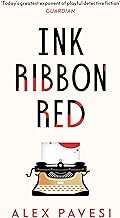 My forthcoming novel, Ink Ribbon Red, has a familiar set-up: six friends, who met at university, gather at a large house in the Wiltshire countryside to celebrate the youngest of the group turning thirty. It’s the late May bank holiday weekend. By Monday morning, at least one of them will be dead.
My forthcoming novel, Ink Ribbon Red, has a familiar set-up: six friends, who met at university, gather at a large house in the Wiltshire countryside to celebrate the youngest of the group turning thirty. It’s the late May bank holiday weekend. By Monday morning, at least one of them will be dead.
The book takes place in the final year of the last millennium. 1999. But it’s a story that could have been set at almost any time since, say, the 1950s or 60s – whenever it was that changing social mores made it acceptable for a mixed group of wealthy young people, mostly single, to retreat to the countryside together, without any servants getting in the way. But the inspirations for the book were mostly contemporary. When I was pitching it to my editor, I had in mind the very enjoyable remote-location thrillers of Lucy Foley, C.L. Taylor and Shari Lapena, among others, all of which are set in the modern day.
Of course, there are several widely discussed problems with setting crime fiction in the present, notably the fact that a mobile phone means anyone can call for help at any time, unless something has conveniently gone wrong (convenient for the plot, not so much for the characters), and the fact that the internet makes it trivial to check out someone’s story. But neither of those things were issues in my case. None of the characters in Ink Ribbon Red know that they’re in jeopardy – or even that someone might be lying to them – until it’s too late.
Nonetheless, I felt the lure of the past.
Generally speaking, I like my crime fiction to be playful. The less real it feels, the better. There’s a reason that in the Golden Age classics of the genre, bodies are often found in bizarre, incongruous locations: lying on a golf course, face-down in a swimming pool or, famously, between the shelves of a library. Anything that makes the killing less real makes it more fun. I think the same could be said of books set in the past. The extra distance added by placing the characters in a world that is no longer familiar to us makes the whole thing feel, to me at least, more playful and slightly less like it might actually be happening.
This last point was of particular importance for Ink Ribbon Red, since throughout the book the reader is encouraged to question whether certain incidents are, in fact, actually happening. It’s a wet weekend in the unseasonably cold springtime. The six friends are passing the time by playing a parlour game that requires them to imagine one another’s murders. They then type up these apocryphal versions of events using the typewriters that give the novel its title. Fiction and reality intertwine, to the point that it’s impossible to know where one ends and the other begins – until all is explained at the end of the book. To make this work, I wanted the entire text to have an air of unreality. I chose to set it in the past because the past feels less real than the present. And the recent past is the most unreal of all.
The term “uncanny valley” is used in computer graphics to refer to depictions of humans that look almost life-like, but fail in some of the smaller details. The term could equally be used for the recent past, being almost identical to the present but alien and strange at the same time: not so much a foreign country, but a looking-glass version of the modern day.
It’s a fact made use of – to sensational effect – in Kazuo Ishiguro’s Never Let Me Go, which blends its science-fictional elements into an early 90s setting, filled with cassette tapes and flimsy, foam-covered headphones, both long out of date by the time the novel was published in 2005. I wanted Ink Ribbon Red to have, at least in part, a similar sense of other-worldliness.
So two of my characters carry mobile phones (notably not smart), while the others remain dependent on old-fashioned payphones, powered by thick pound coins with corrugated rims, found in long rows at the back of motorway service stations. Takeaway coffees are served in styrofoam cups that hide their heat. People smoke indoors. Houses look broadly the same but are relatively affordable. Everything electronic is fitted with an LCD screen, a dulled avocado colour. The past rubs up against the future. One of the characters – the workaholic of the bunch – brings his laptop with him for the weekend, but they decide as a group that the pair of typewriters found among the house’s many antiques offer a more practical way of typing up their stories.
I turned sixteen in 1999, when most of Ink Ribbon Red takes place.
By setting the book in that year, I was attempting to capture a world that I remember well, but which no longer feels very real to me now.

Michael Joseph PRH
RRP: £18.99
Released: November 7 2024
HBK
"This is one of the smartest and most original crime novels of the year and maybe of the next few years."
Read the rest of Adam Colclough's review here